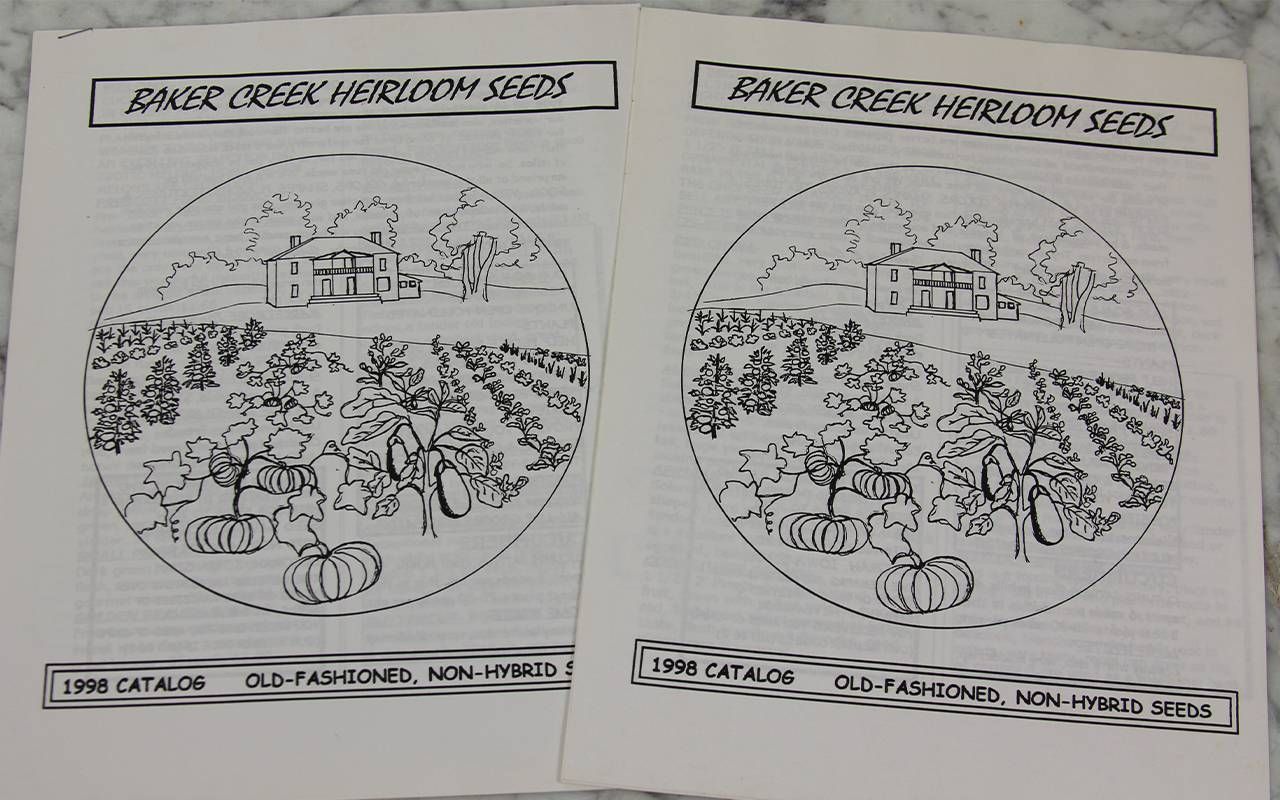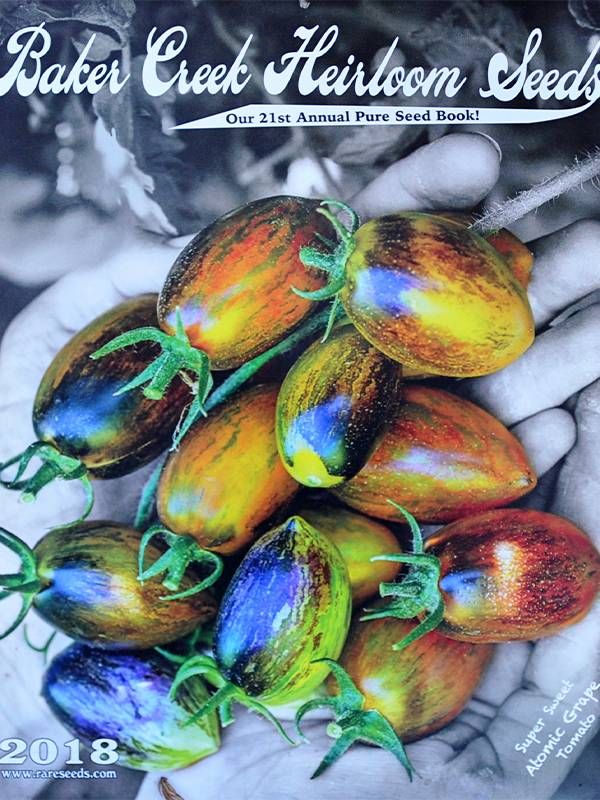Seed Catalogs: The Promise of Spring
Seed catalogs bring color and hope to winter days, and the chance to think about the growing season ahead
The arrival of a colorful seed catalog in the mailbox on a gray winter day just might make the gardener's heart beat a little faster.

"There is something pleasurable about leisurely flipping through photos of beautiful edibles and flowers during the coldest months of the year," says Kelly Funk, president of Park Seed in Greenwood, South Carolina.
Seed catalogs provide a great source of inspiration for all types of gardeners.
Seed catalogs provide a great source of inspiration for all types of gardeners. In addition, there can be a pleasurable response to having a catalog in your hands versus clicking online.
"I planted my first garden when I was three," says Jere Gettle, owner and founder of Baker Creek Heirloom Seed Company in Mansfield, Missouri. "I learned to read partly through poring over the seed catalogs that came in the mail. My family was homesteaders, so we lived far from town and very simply."
According to Gettle, the catalogs, with their exotic-looking flowers and vegetables from around the world, were like portals to other places.
"I knew I wanted to be involved in the seed business when I got older."
"I loved them, and from early on, I knew I wanted to be involved in the seed business when I got older. I wanted to travel and explore the places where those seeds came from," he says.
Gardens From Years Past
The first seed catalog may have been a pamphlet that a London nurseryman named William Lucas sent to his customers. Then, in 1771, an American, William Prince, offered a list of fruit trees he had for sale at his nursery in New York.
"Over time, hundreds of local and regional seed companies popped up in the U.S. to serve the needs of regional farmers and home gardeners," says Gettle. "Some of them had spectacularly beautiful catalogs."
"The Smithsonian Institution Libraries have a collection of seed catalogs that include about 10,000 seed and nursery catalogs from 1830 to the present," says Funk. "Park Seed published its first catalog in 1868. The book contained just 8 pages and used two illustrations – wood cuts of an aster and a pansy."
Seed catalogs have that unmistakable draw of anticipation for many gardeners, but the government also pays attention to them. Percy Leroy Ricker began collecting seed catalogs for the United States Department of Agriculture in 1904.
He scoured bookstores that sold old print publications, and requested catalogs from nurseries, then documented the information for the department.
Their interests leaned toward the history of chemicals used in gardens, the evolution of gardening tools and garden design as well as preservation methods for seeds.
As a result, the department's collection holds early catalogs from the 1700s and totals more than a quarter-million catalogs from countries across the globe.

Covers and Changes
As a child, Gettle was aware of the changes in the seed catalogs he received. He noticed that many of the old varieties of seeds were starting to disappear from the catalogs and were being replaced by hybrids.
"My family moved from Montana to our farm in the Missouri Ozarks when I was 12. It was right around then that I joined Seed Savers Exchange and began trading seeds with other people interested in preserving heirloom varieties," he says.
"By the time I was 17, I had enough seeds to sell, and I asked my parents what they thought about publishing a little seed catalog and sending it out to friends, family and other seed savers I knew," he recalls. "The first Baker Creek seed catalog was published in 1998. It was 12 pages long, with listings of about 70 varieties. My mom drew the artwork for the front cover and illustrations inside, and we distributed about 550 copies."
While many people now rely on the internet, seed catalogs provide a visually appealing and tangible way to browse a large variety of seeds.
From a marketing perspective, the catalog's front cover is probably one of the most critical aspects of the catalog, inspiring gardeners to buy the cover shot product and other products within its pages.
"Gardeners are passionate about their seeds," says Funk. "Seed catalogs provide information for gardeners to find their favorite seeds they've planted for years, and presents varieties of seeds that might be new to the customer."
Gettle says that whatever is on their cover is usually one of their best sellers for that year. And he has a definite favorite when it comes to catalog covers. "Our first big hit was Brad's Atomic Grape tomato, an amazing open-pollinated variety bred by Brad Gates of Wild Boar Farms," he says.
Online vs. Print
Although many seed companies have gone entirely online with their catalogs, some have offered print catalogs on request. For instance, Park Seeds' catalog is available in both the printed catalog mailed to the customer and the online catalog.

"While many people now rely on the internet, seed catalogs will always provide a visually appealing and tangible way to browse a large variety of seeds, an experience that a computer cannot provide," says Funk.
Gettle says that most of Baker Creek's sales come through their website, including from customers who have received a print catalog but prefer to order online. But print is still essential to how Baker Creek reaches its customers.
Photos and illustrations in printed seed catalogs can inspire a gardener and offer a colorful respite from an otherwise gray winter. Catalog readers use catalogs to plan spring gardens, share seed packets with friends and family, find new varieties, or find heirloom seeds that allow them to reminisce.
"For me, it really does evoke those family memories of sitting with my parents or grandparents, looking at all the wonderful varieties and dreaming of what to plant," says Gettle.
"Those memories have always stayed with me, and they always will."


